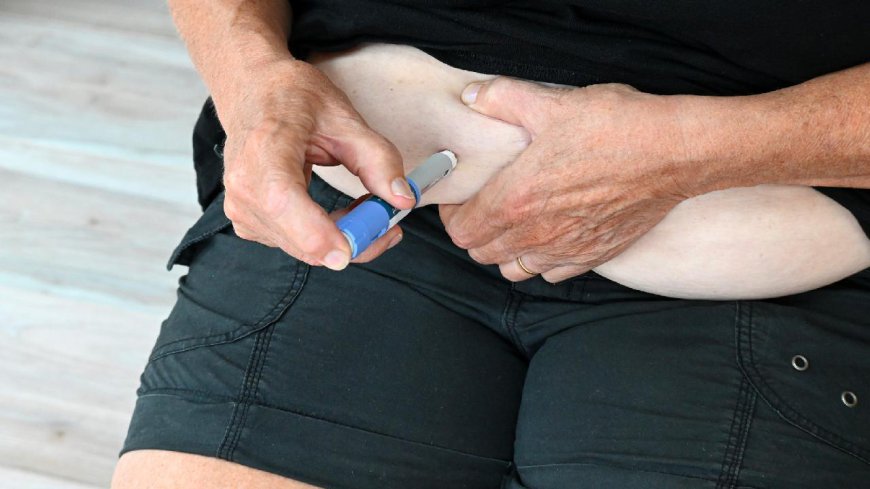Mounjaro: Proper storage and handling

Mounjaro Injection Dubai is a relatively new medication that has gained attention for its effectiveness in treating type 2 diabetes and, more recently, for weight management. It works by mimicking hormones in the body that help regulate blood sugar levels, appetite, and fat storage. While its therapeutic benefits are substantial, proper storage and handling are crucial to ensure the medication remains effective and safe for use.
Understanding Mounjaro
Mounjaro is administered via injection and is typically prescribed for individuals who are struggling to manage their type 2 diabetes with diet and exercise alone. The medication comes in prefilled pens, which simplify administration but also require careful handling to maintain efficacy. The active ingredient, tirzepatide, functions by stimulating insulin secretion and reducing glucagon levels, thus helping lower blood sugar levels.
Importance of Proper Storage
The efficacy of Mounjaro can be significantly affected by improper storage. Here are essential guidelines for storing Mounjaro correctly:
-
Temperature Control: Mounjaro should be stored in the refrigerator at a temperature between 2°C and 8°C (36°F to 46°F). Do not freeze the medication, as freezing can degrade the active ingredients, rendering the medication ineffective.
-
Avoid Direct Light: It’s crucial to keep Mounjaro away from direct sunlight and excessive heat. Exposure to light can degrade the medication, so keeping it in its original packaging until it’s ready for use is advisable.
-
Handling During Use: Once removed from the refrigerator, Mounjaro can be kept at room temperature (up to 30°C or 86°F) for a limited time—typically, up to 21 days. It’s important to track the time elapsed after taking it out of the refrigerator to ensure it remains effective.
-
Expiration Dates: Always check the expiration date before using Mounjaro. Expired medication should never be used, as it may not be effective and could potentially cause harm.
-
Disposal: Unused or expired Mounjaro should be disposed of properly. Follow local regulations for medication disposal, and avoid flushing it down the toilet or throwing it in the regular trash. Instead, utilize drug take-back programs when available.
Proper Handling Techniques
In addition to storage considerations, handling Mounjaro correctly is equally important to ensure safety and efficacy. Here are some best practices for handling the medication:
-
Hygiene: Before injecting Mounjaro, wash your hands thoroughly with soap and water. This step is essential to prevent infections and ensure that the injection site is clean.
-
Check the Solution: Before administration, inspect the Mounjaro pen. The solution should be clear, colorless, and free from particles. If the solution appears cloudy or has visible particles, do not use it and consult your pharmacist or healthcare provider.
-
Follow Injection Instructions: Mounjaro is typically injected subcutaneously (under the skin). It’s crucial to follow the specific instructions provided by your healthcare provider regarding injection sites and techniques. Common injection sites include the abdomen, thigh, or upper arm, and rotating injection sites is recommended to avoid irritation or lipodystrophy (abnormal distribution of fat).
-
Discarding Used Pens: After using the pen, dispose of it in a sharps container. Do not throw used pens in regular trash or recycle them, as they can pose safety risks to others.
-
Monitor for Reactions: After administering Mounjaro, it’s important to monitor for any adverse reactions, such as allergic responses or gastrointestinal issues. Report any severe or concerning symptoms to your healthcare provider immediately.
Traveling with Mounjaro
For individuals who travel frequently, ensuring proper storage and handling of Mounjaro while on the go is essential. Here are some tips:
-
Travel Cooler: Consider using a travel cooler or insulated bag to keep Mounjaro within the recommended temperature range. Use ice packs, but ensure that the medication does not come in direct contact with ice, which could freeze it.
-
Plan Ahead: When traveling, plan ahead for any situations where refrigeration may not be available, such as on planes or during long trips. Research facilities or services that can provide refrigeration when necessary.
-
Carry Documentation: When traveling, especially internationally, carry a copy of your prescription and a letter from your healthcare provider explaining your need for Mounjaro. This documentation can be helpful in case of questions at security checks.
Conclusion
Proper storage and handling of Mounjaro are essential for maintaining its effectiveness and ensuring patient safety. By following the outlined guidelines, patients can manage their diabetes or weight effectively while minimizing the risk of complications or inefficacy due to improper handling. Always consult a healthcare provider for personalized advice and recommendations regarding Mounjaro use, and stay informed about any updates related to the medication’s handling and storage requirements.
